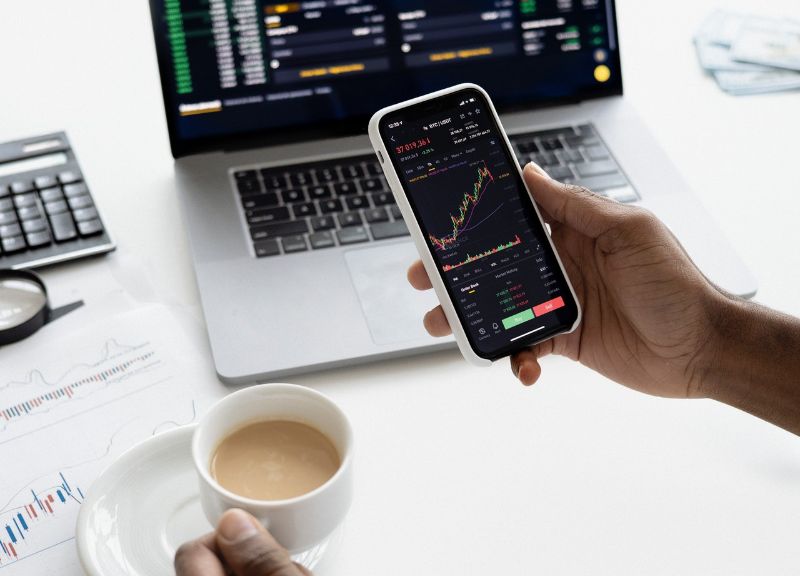The term “homemade dividends” refers to a type of investment income that is generated by selling a portion of an investor’s equity portfolio. To meet his financial goals, the investor sells some of his stock rather than waiting for the regular dividends. Assuming that a dividend is not yet due, a shareholder can sell some of his stock in order to generate the necessary cash inflow.
Many are questioning if traditional dividends are worth the money because investors can now generate their own instead of waiting for regular payouts. Investors might produce cash inflows by selling a portion of their equity portfolios rather than adhering to a company’s dividend policy, according to the dividend irrelevance theory.
What is homemade dividend?
Individuals who sell off a piece of their investment portfolio are able to produce a sort of investment income known as a home-made dividend. These assets are different from the typical dividends that a company’s board of directors distributes to various shareholder classes. ‘
Why do investors want dividends?
For investors, dividends are important because they raise stock gains, provide an additional metric for fundamental analysis, lower total portfolio risk, provide tax advantages, and help to retain the purchasing power of capital.
What do dividends mean for an investor?
The term “dividend investing” is often used interchangeably with “income investing.” A company’s payments to shareholders are referred to as dividends. As a shareholder, you are entitled to a portion of the company’s profits. As your portfolio’s value rises, you’ll earn a steady stream of income as well.
Is a homemade dividend a viable alternative to cash dividends for the investor?
A dividend-paying company’s dividend policy may not matter to the investor in theory, and the investor may nevertheless generate an income comparable to a dividend-paying company. However, when we factor in trading fees and taxes, the future growth potential of the stock’s homemade dividends may not be as effective as dividends from standard stocks.
What is homemade leverage and why does it matter?
DIY leverage is designed to allow investors to replicate the returns of a leveraged company by investing in an unleveraged company. As a result, it is difficult to achieve the correct leverage effect because the costs of corporate and individual leverage are different.
However, a company’s capital structure can be undone by an investor using homemade leverage. For example, if an investor owns stock in a firm that plans to borrow money through debt. To maintain the desired level of leverage, a firm might change its personal portfolio leverage.
Are dividends good for investors?
If you’re looking for a strategy to get paid when the market is shaky, dividend-paying stocks can help. As they increase, they provide a good protection against inflation. Other sources of income such as interest on fixed-income investments do not qualify for tax advantages.
Why would you buy stocks without dividends?
In contrast to the most of my articles, which end with a lengthy summary, this one will be kept to a minimum.
For those who desire to invest in a company that reinvests its profits for future growth, they invest in non-dividend paying stocks. As the stock price rises, they hope these reinvested earnings will help them make more money by selling the stock at a higher price.
Capital gains are the name given to this form of revenue. In addition to being extremely rewarding, it can also increase your net worth tax-free.
Microsoft is an example of a company that pays dividends, but it is less likely to achieve rapid development because a portion of its income is handed back to investors.
Capital gains from stocks that don’t pay dividends are a bonus, but I also enjoy earning regular dividends for doing absolutely nothing. – I used Snapchat to accomplish this.
Investing in a firm and then losing all my money is something I despise. Lucky for me, I haven’t yet attempted this.
What are the benefits of dividend stocks?
In the long run, dividend-paying firms have several advantages, especially if you want to hold on to them. Additionally, many dividend-paying equities are located in sectors that can withstand downturns in the economy with less risk. These companies are typically strong and well-positioned for long-term success since they pay out dividends.
Dividends are payments made from a company’s profits and given to a certain group of shareholders. It is possible to get a share of stock or other property in lieu of cash dividends. Some equities do pay dividends, but not all do.
How do I make 500 a month in dividends?
Consequently, you will have a clear understanding of how to earn $500 a month in dividends once we are done. Make it easy for yourself by starting with just one stock at a time.
In terms of passive income, dividends from dividend stocks are the finest!
After all, who doesn’t need a little additional cash to improve their quality of life?
So there’s no need to put it off any longer.
If you’d like to receive dividends on a monthly basis, follow these five actions.
Start smaller when starting from scratch
You’ll need a portfolio of about $400,0000 to earn $1000 each month in dividends. If you’re not converting an existing IRA, that may seem like an absurdly large number today.
As a result, you should start with lesser dividend targets, like $100 a month.
To achieve your long-term goal, you must keep investing and reinvesting.
It’s easier and more efficient to buy small amounts of stock now that huge brokerage firms have reduced trading commissions to zero.
Invest in different stocks
In addition to the fact that you’ll need to invest in a variety of companies to cover the entire year, $400,000 is a huge sum of money. In order to mitigate risk, it is best to invest in a variety of different companies.
Many eggs in one basket is a risky strategy for three equities. In the event that one of these stocks fails, you could lose a significant portion of your investment capital.
Additionally, diversifying your portfolio by purchasing a variety of companies allows you to have exposure to a wide range of industries while also taking advantage of rising market prices.
No stock should account for more than $200 or $250 of a month’s dividend income.
Look for stocks with consistent dividend payment histories
In the stock market, the only certainty is that it will rise and fall. Moreover, the only dividend you can be sure of receiving is the one that is really paid.
However, dividend-paying stocks with a long history of payments are more likely to continue to do so in the future.
In order to maintain their share price, long-term payers tend to continue making payments in the future.
The dividend schedule may be affected by the company’s or the market’s conditions. Because of a merger or acquisition, the dividend strategy may change.
Double-check the stock’s next ex-dividend date
Inquire about the next dividend payment before purchasing your shares.
The stock’s ex-dividend date signifies that dividends have been removed from the stock’s value. To be eligible for the future dividend payment, you must have owned the shares prior to that date.
A purchase of these shares may be worthwhile even if you don’t qualify for the next dividend payout. It’s possible that a different stock could be a better buy at this time based on your watchlist.
Check what taxes you may owe on your income
When creating a dividend income portfolio in a conventional brokerage account, rather than a tax-deferred retirement account, you’ll likely have to pay additional income taxes and paperwork each year.
In order to meet your target of $1000 in dividends per month, you may need to make a larger investment.
Give the IRS or a trusted tax professional a call to verify your specific situation.
Don’t chase dividend yield rates
Once again, I’d want to make this point. Regular stocks with high dividend yields may suggest an issue with the firm that is lowering the stock price. Your corporate research should be double-checked. Your aim will suffer if you lose both your dividend income and the value of your shares.
Based on your research, you may decide to take a chance on a specific stock. Simply enter as a well-informed investor with all of your senses alerted.
Unlike conventional equities, REITs (real estate investment trusts) are taxed differently, which means that dividends are often higher.
Reduce the risk by splitting your monthly payments among multiple stocks
Large investments in individual equities are required to meet the objective of $1000 per month in dividends.
It’s important to stress once again that past performance does not guarantee future outcomes. Even with the longest-paying firms, dividends might be terminated.
It’s a good idea to diversify your portfolio by purchasing multiple stocks with the same dividend patterns. Two stocks paying $250 a month for the same pattern might be the answer.
You can structure and track your dividends with a simple Google Sheets dividend planner.
You’ll do your best with the facts you have at the moment when it comes to stock market investments. Course-correct if necessary in the future.
Do I get dividends if I own shares?
How are stock dividends calculated? If you hold 30 shares of a firm and the company pays $2 in annual cash dividends, you will earn $60 in dividends per year if you own 30 shares.






